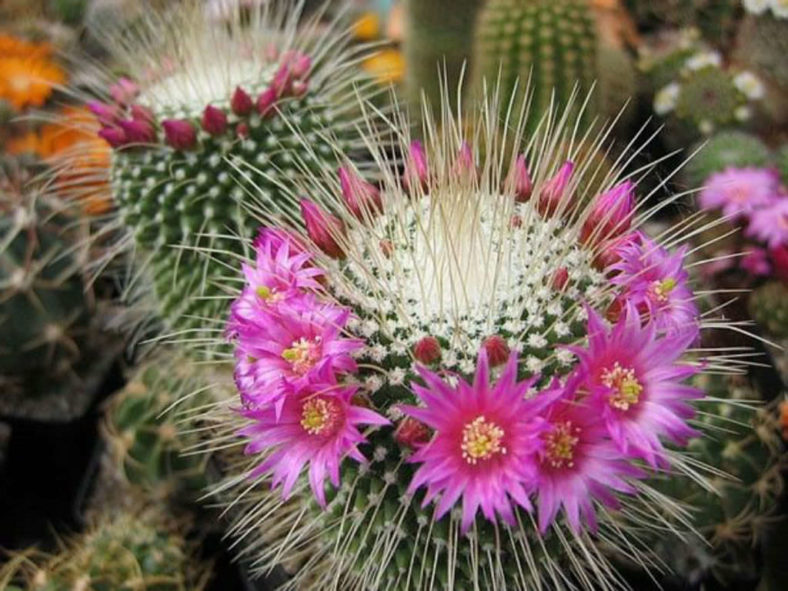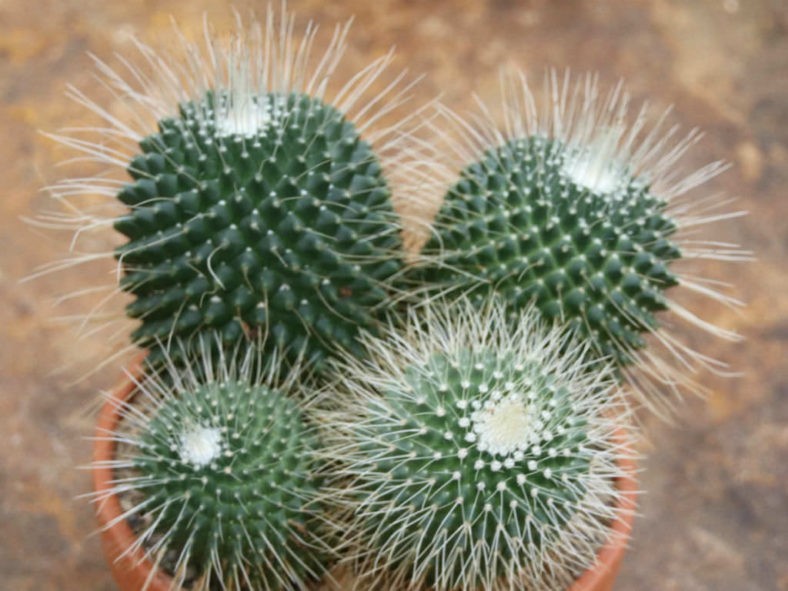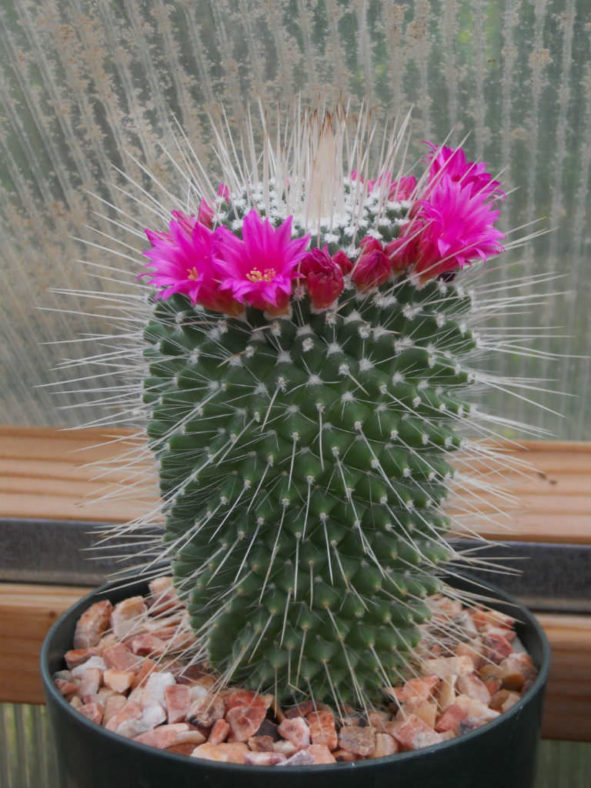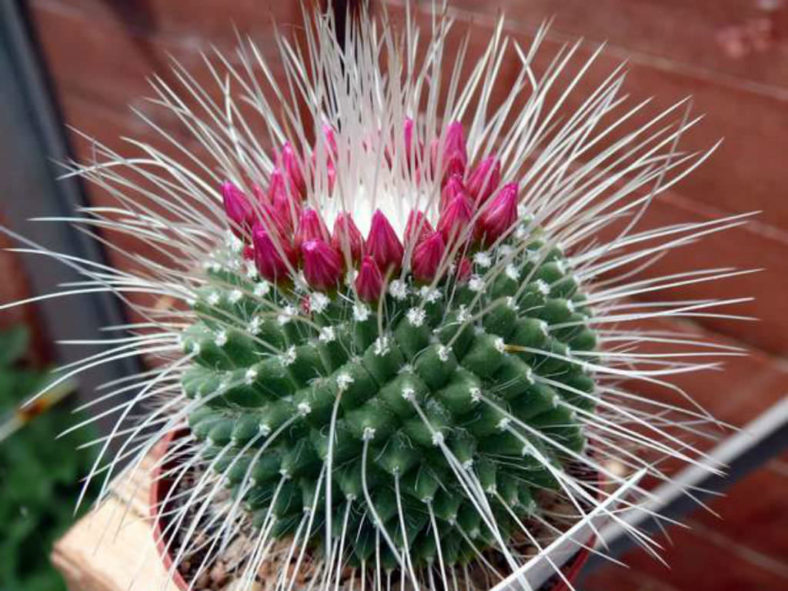Scientific Name
Mammillaria spinosissima 'Un Pico'
Scientific Classification
Family: Cactaceae
Subfamily: Cactoideae
Tribe: Cacteae
Subtribe: Cactinae
Genus: Mammillaria
Origin
Mammillaria spinosissima 'Un Pico' is a cultivar of Mammillaria spinosissima.
Description
Mammillaria spinosissima 'Un Pico' is an attractive cactus with only one spine per areole. The stem is dark blue-green, columnar, usually solitary but sometimes clumping, and can grow up to 1 foot (30 cm) tall and 4 inches (10 cm) in diameter. The tubercles are ovate-conical, 4-sided basally, with axils slightly woolly. The spines can measure up to 1.6 inches (4 cm) in length.
The purple-red flowers appear in spring and can reach a diameter of up to 0.5 inches (1.3 cm).

How to Grow and Care for Mammillaria spinosissima 'Un Pico'
Hardiness: USDA hardiness zones 10a to 11b: from 30°F (-1.1°C) to 50°F (10°C).
To encourage better flowering, allow the plants to enjoy a cooling period in the winter and suspend watering. Unlike many other cacti, which use their ribs as storage devices, Mammillaria features raised tubercles, from which spines emerge. When you water, the tubercles will expand for increased water storage. The flowers emerge from the axils of these tubercles on the previous year's growth, which accounts for their interesting halo effect. The cactus mustn't be exposed to prolonged dampness and standing water. Never let your cactus sit in a dish of water. Lastly, fertilize during the growing season for the best results.
Repot as needed, preferably during the warm season. To repot Mammillaria, ensure the soil is dry before repotting, then gently remove the pot. Knock away the old soil from the roots, removing any rotted or dead roots. Treat any cuts with a fungicide. Place the plant in its new pot and backfill it with potting soil, spreading the roots out as you repot. Leave the plant dry for a week or so, then begin to water lightly to reduce the risk of root rot.
Learn more at How to Grow and Care for Mammillaria.
Links
- Back to genus Mammillaria
- Succupedia: Browse succulents by Scientific Name, Common Name, Genus, Family, USDA Hardiness Zone, Origin, or cacti by Genus
Photo Gallery
Click on a photo to see a larger version.


